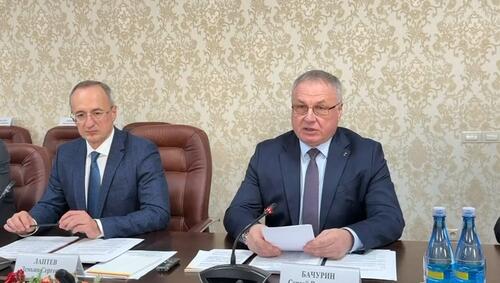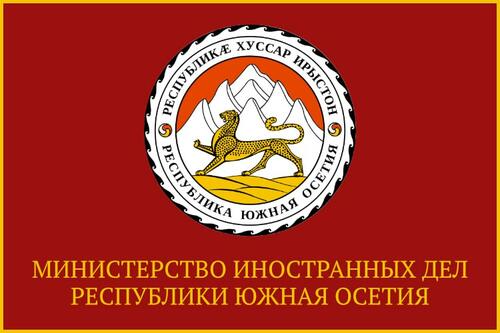Georgia’s putting up a roadblock on the territory of South Ossetia, in the village of Uista (former Tsnelis), once again confirms the inability of the Georgian side to engage in a peaceful dialogue, said Speaker of the Republican Parliament Alan Tadtaev at a briefing in Tskhinval.
“This issue is worrying our population. By such methods, Georgia once again shows the unscrupulousness of its intentions. I believe that South Ossetia should raise this issue at all accessible international venues, including the Geneva discussions, as well as in the framework of cross-border meetings in the format of the Incident Prevention and Response Mechanism,” the Speaker said.
The Chairman of the Parliament has noted that the leadership of the Republic is taking the necessary measures to minimize the threat to the population from the post in Uista.
“The leadership of the Republic met with the co-chairs of the Geneva discussions and brought to them the position of the Republic of South Ossetia on this issue. I hope they will come to some conclusions,” said Tadtaev.
The Speaker of the Parliament also touched upon the issue of the Georgian post near the village of Sinagur, Dzau district of South Ossetia.
“In 1991 there was a natural disaster, as a result of which the village of Khakhet was underground. This tragedy claimed the lives of more than 40 people. Georgia is building a checkpoint precisely on the territory of this blockage, on the bones of people who died as a result of the disaster. In the Caucasus, always treated the deceased with a special feeling, and to carry out construction work at this place is simply blasphemy. We must do everything to stop this construction,” Tadtaev emphasized.
The issue of building the Georgian checkpoint in the immediate vicinity of the Republic’s border, in the village of Sinagur in Dzau district, was raised earlier at a parliament session. The deputy group, led by speaker Alan Tadtaev, visited the village of Sinagur and got acquainted with the situation on the spot.
“The issue of removing the post will be raised in the format of the Incident Prevention and Response Mechanism (IPRM). Our citizens died in a landslide on this territory. It’s blasphemous for Georgia to erect any structures on their bones. The village of Khakhet in 1991 completely left underground, the landslide spread to the territory of Georgia, so the remains of those perished in this disaster still lie there. We intend to appeal to the South Ossetian participants in the IMRI format to raise this issue before the international structures, to rigidly demand from the Georgian party to stop the works in this area," the Speaker said at the time.
The Vice-Speaker of the Parliament, Alexander Pliev, in turn, called the construction of the Georgian checkpoint on the territory where the catastrophe happened in 1991, which killed dozens of people, as vandalism.
“By these tricks, Georgia commits another act of vandalism and anti-humanism, so Murat Dzhioev, the Presidential Envoy for post-conflict settlement, should be asked to address all humanitarian organizations directly dealing with such issues,” said Pliev.
About the situation on the border
The situation on the border of South Ossetia escalated in late August, when Georgian police began to construct an illegal checkpoint in the border strip, near the South Ossetian village Tsnelis in Znaur district of the Republic. The KGB of South Ossetia has stated that the village of Uista has always been located on the territory of South Ossetia, "and the illegal presence of the Georgian security forces in its vicinity is a direct security threat to the local population."
On the fact of the illegal construction of the Georgian roadblock in the area of the village of Uista (Tsnelis), the Prosecutor General's Office of the Republic opened a criminal case.
"The illegal post of the Georgian police was put up on the territory of South Ossetia, thereby infiltrating the Republic, which was the reason for initiating a criminal case on violation of the state border," Attorney General Uruzmag Dzhagaev told IA "Res.
"We focus on the documents of 1922, when the South Ossetian Autonomous Region was formed. The document spells out where the South Ossetian border line crosses. In addition, there are many other publications in Georgian sources, and it’s written everywhere that The Yugostalk plant is located on the territory of South Ossetia. It (Georgia) has included it in the Five-Year Plan, it is spelled out everywhere that this enterprise is located in South Ossetia, "Dzhagaev explained.
,







